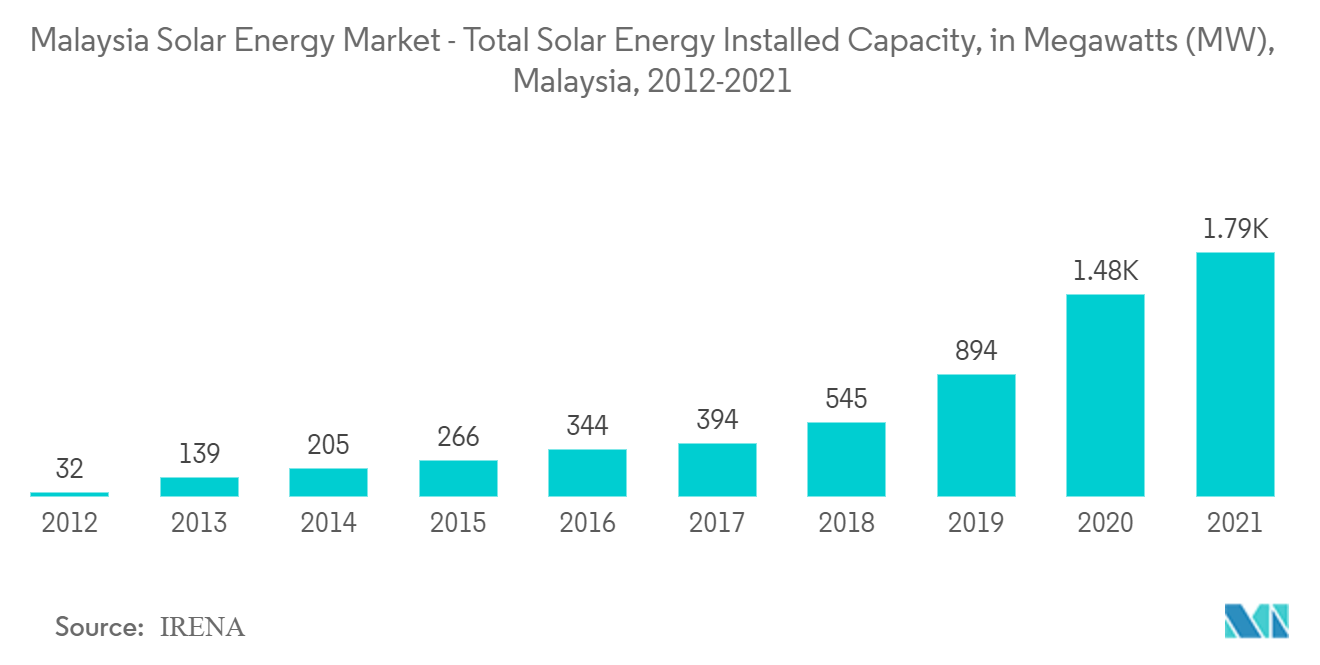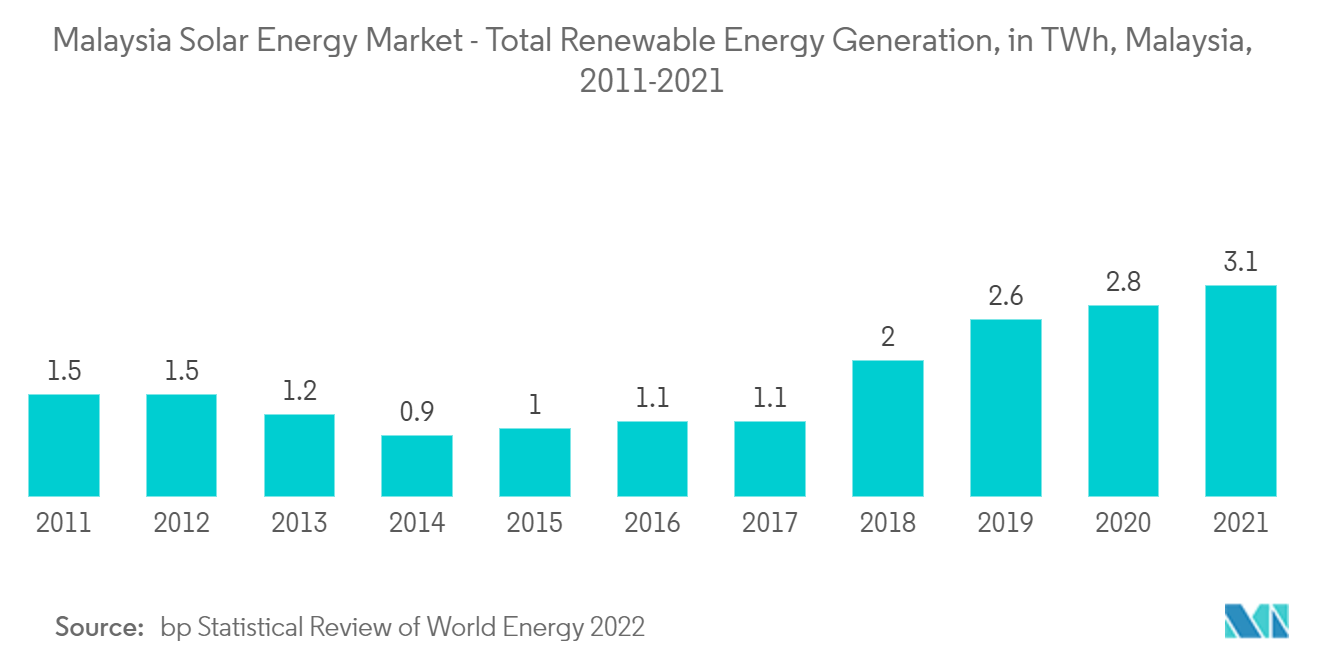Market Trends of Malaysia Solar Energy Industry
The Utility Sector to Dominate the Market
- Malaysia generates and consumes clean electricity from some of its large-scale solar power generation plants, such as the Sepang solar plant of 50 MW operated by TNB Renewables Sdn. Bhd. (TRe), which is made up of 238.140 solar panels. In the same way, the 50 MW Mukim Tanjun solar farm on 98 hectares with 23,000 solar panels makes clean electricity and prevents 76 000 tons of CO2-equivalent emissions from being released each year. Large-scale solar projects in Malaysia are mostly made up of other projects that are still in the planning stages.
- The Malaysian government said in October 2022 that a power purchase agreement for large-scale PV would be extended from 21 to 25 years. This change would affect the projects that won the fourth round of large-scale solar awards, called LSS4 in Malaysia. It is expected to significantly increase the installed capacity of solar energy.
- In line with Singapore International Energy Week, the Malaysian Ministry of Energy set renewable energy goals for the year 2035.Malaysia wants to get 31% of its energy from renewable sources by 2025, which would be 8.53 GW, and 40% by 2025, which would be 10.94 GW.
- Because solar energy is so popular, its net installed capacity was projected to reach 1,787 MW in 2021, up from 32 MW in 2012.
- Based on the above, it seems likely that the utility sector will lead the Malaysian solar energy market over the next few years.

Supportive Government Policies and Initiatives Driving the Market Demand
- In 2022, Malaysia's government declared its national energy policy (NEP) 2022-2040, aiming to achieve a 4% share of solar energy in the country's fuel mix by 2040. This could ramp up the installation of solar energy projects in the country.
- Similarly, the NEP also emphasized launching initiatives such as a Long-term pipeline of Large Scale Solar (LSS) projects, incentivizing dual-use agri-voltaic solar farms, an extension of Net Energy Metering (NEM), and increasing capital access for distributed solar to enhance and unlock the potential of indigenous solar resources.
- In 2021, Malaysia's energy generation from renewable sources reached 3.1 Twh, with a growth rate of around 11% from previous year.
- The Sustainable Energy Development Authority (SEDA) introduced NEM 3.0, effective from 2021 to 2023, to uplift solar utilization in the country. The net metering program also initiated three novel initiatives to deploy solar energy systems: the Rakyat program for households, the NEM GoMEn program for government buildings, and NOVA Program for the commercial & industrial segments. It is likely to expand the solar energy market in Malaysia.
- The Malaysia renewable energy policy targets a capacity increase of renewable energy to 4000MW by 2030. Also, renewable energy generation in the country has increased in recent years. It was 3.1 Terawatt hours in 2021, a 10% increase from the previous year. Considering the capacity expansion as per policy & increasing generation trend, the solar energy market in Malaysia will witness an upward trend in the coming years.
- Considering the ambitious targets and other incentive measures introduced by the government, Malaysia's solar energy market is expected to increase.


